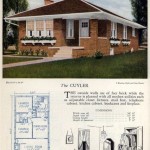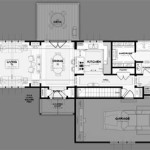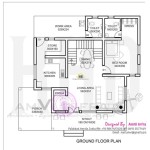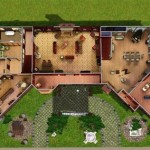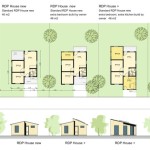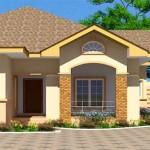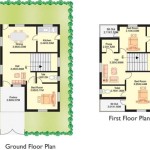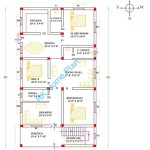Roman Home Floor Plans: A Study in Functionality and Social Hierarchy
Roman homes, from humble dwellings to elaborate villas, offer a fascinating glimpse into the daily lives and social structure of ancient Roman society. The floor plans of these residences were not merely haphazard arrangements of rooms but rather carefully considered designs reflecting status, utility, and the importance of family and business.
Understanding Roman home floor plans requires consideration of the various types of housing available to different social classes. While the majority of the population lived in multi-story apartment buildings known as *insulae*, the wealthy elite resided in single-family homes called *domus* in urban areas and expansive villas in the countryside. Each type of dwelling exhibited distinct characteristics in terms of size, layout, and decoration.
The information derived from archaeological excavations, surviving architectural remains, and literary sources provides valuable insights into the organization and purpose of rooms within Roman homes. These sources allow for the reconstruction of typical floor plans and the interpretation of their significance within the broader context of Roman culture.
The *Domus*: A Center of Family and Business
The *domus*, or Roman house, was the dwelling of the upper classes and served as a center of family life, business, and social interaction. Its floor plan was typically inward-facing, with few windows opening onto the street. This design prioritized privacy and security, shielding the residents from the noise and chaos of the city.
The entrance, or *ostium*, often led into a narrow hallway called the *fauces*. This hallway provided access to the central space of the house, the *atrium*. The *atrium* was a large, open courtyard with a shallow pool, or *impluvium*, in the center to collect rainwater. The *compluvium*, an opening in the roof above the *impluvium*, allowed light and air to enter the house. The *atrium* functioned as a reception area and a focal point for family life.
Off the *atrium* were various rooms, including the *cubicula* (bedrooms), *alae* (open recesses used for displaying family portraits and other objects), and *tablinum* (a study or office located at the rear of the *atrium*). The *tablinum* was the master's private space and served as a meeting place for business clients and guests. It often contained records, accounts, and important documents.
Behind the *tablinum* was the *peristylium*, a colonnaded garden courtyard. The *peristylium* provided a tranquil and aesthetically pleasing space for relaxation and contemplation. It was typically adorned with plants, fountains, and sculptures. Around the *peristylium* were located other rooms, such as the *triclinium* (dining room), *culina* (kitchen), and additional *cubicula*.
The size and complexity of a *domus* varied depending on the wealth and status of the owner. Larger houses might include additional courtyards, gardens, and specialized rooms, such as libraries, baths, and even private gymnasiums. The decoration of the *domus* was often elaborate, with frescoes, mosaics, and marble sculptures adorning the walls and floors.
The placement of rooms within the *domus* reflected the social hierarchy of Roman society. Public spaces, such as the *atrium* and *tablinum*, were located closer to the entrance and were accessible to visitors and clients. Private spaces, such as the *cubicula* and *peristylium*, were located further back in the house and were reserved for family members and close friends.
The *Insula*: Apartment Living in Ancient Rome
The *insulae* were multi-story apartment buildings that housed the majority of the Roman population, particularly in urban centers like Rome. These buildings were often poorly constructed and prone to collapse or fire. Living conditions in the *insulae* were generally crowded, noisy, and unsanitary.
The ground floor of an *insula* typically consisted of shops and businesses, providing goods and services to the residents and passersby. The upper floors were divided into apartments of varying sizes, from single rooms to multi-room units. The rent for these apartments varied depending on their size, location, and the availability of light and air.
The floor plans of *insulae* apartments were generally simple and functional. Rooms were often small and cramped, with limited natural light. The lack of indoor plumbing meant that residents had to rely on public latrines and water sources. Cooking was typically done on portable stoves, which posed a fire hazard in the densely populated buildings.
Due to the limited space, furniture in *insulae* apartments was often minimal and multi-functional. Beds were often used as seating during the day, and storage space was limited to chests and shelves. The walls were typically bare or decorated with simple paintings or tapestries.
The social structure within the *insulae* was diverse, with residents from various social classes and occupations living side by side. However, the cramped living conditions and lack of privacy often led to tensions and conflicts. The *insulae* were a breeding ground for disease and crime, and the residents were vulnerable to fires and structural collapses.
While the *insulae* provided essential housing for the majority of the Roman population, they also represented the stark inequalities of Roman society. The contrast between the luxurious *domus* of the wealthy elite and the cramped apartments of the lower classes highlights the significant differences in living standards between the rich and the poor.
Villas: Country Estates and Agricultural Centers
Villas were country estates owned by wealthy Romans. They served as both residences and agricultural centers, providing a retreat from the urban environment and a source of income from farming and other activities. Villas varied in size and complexity, from modest farmhouses to elaborate complexes with multiple buildings and gardens.
Villa floor plans were often more sprawling and less rigidly structured than those of *domus*. Villas were typically designed to take advantage of the surrounding landscape and to provide ample space for outdoor activities and agricultural production. The main house, or *pars urbana*, was the residential area for the owner and their family. It often included features similar to those found in a *domus*, such as an *atrium*, *peristylium*, and *triclinium*.
The *pars rustica* was the working area of the villa, where agricultural activities were carried out. This area included barns, stables, workshops, and housing for slaves and other workers. The *pars rustica* was essential for the economic viability of the villa, providing food, wine, and other products for sale or consumption.
Villas often included elaborate gardens, pools, and other recreational facilities. These features were designed to provide a pleasant and relaxing environment for the owner and their guests. The gardens were typically planted with a variety of flowers, trees, and shrubs, and were often adorned with sculptures and fountains.
The layout of a villa reflected its function as both a residence and an agricultural center. The *pars urbana* was designed for comfort and luxury, while the *pars rustica* was designed for efficiency and productivity. The two areas were often connected by courtyards or gardens, creating a seamless integration between the residential and working spaces.
The size and complexity of a villa depended on the wealth and status of the owner. Some villas were grand estates with multiple buildings, extensive gardens, and numerous slaves and workers. Other villas were smaller and more modest, serving primarily as family farms. Regardless of their size, villas played an important role in the Roman economy and provided a valuable link between the urban centers and the rural countryside.
In summary, Roman home floor plans provide valuable insights into the lives and social structure of ancient Roman society. From the inward-facing *domus* of the wealthy elite to the crowded *insulae* of the urban poor and the sprawling villas of the agricultural landowners, each type of dwelling reflected the specific needs and priorities of its inhabitants. Studying these floor plans allows a better understanding of the daily routines, social interactions, and economic activities of the Romans, offering a tangible connection to a vibrant and complex civilization.

Roman Domestic Architecture Domus Article Khan Academy

Roman House

Plan Of A Pompeian House Roman Courtyard Plans Atrium

Pin By Rebecca Koch On Ancient Rome Roman Bath House Floor Plans

The Roman Domus World History Encyclopedia

Pin On Roman Houses

The Roman Domus House Architecture And Reconstruction

House Of The Vine Museums Victoria

View Page Roman Atrium Style Housing

The Evolution Of House Part 4

